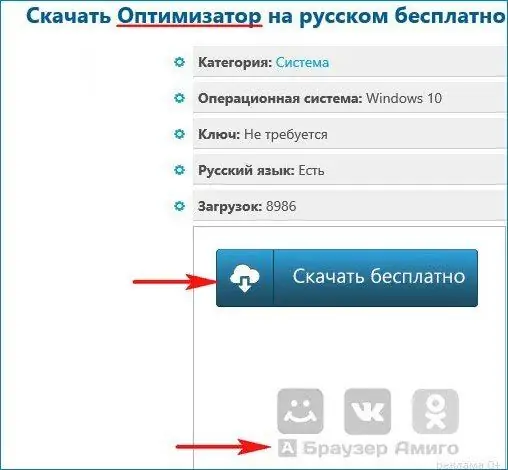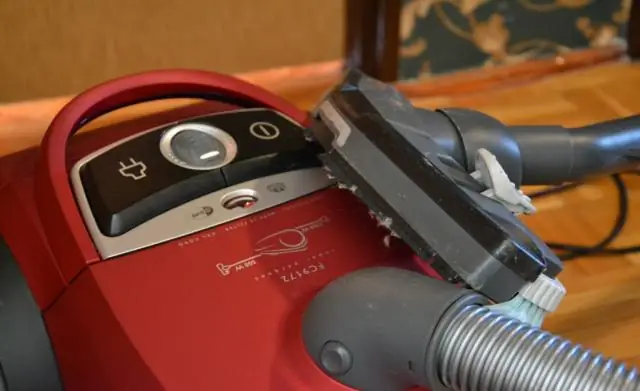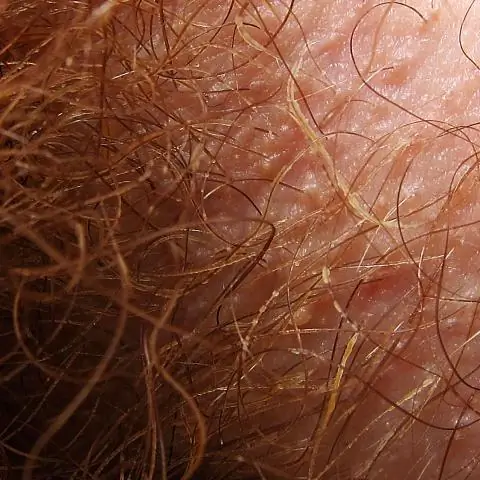
Table of contents:
- Author Bailey Albertson [email protected].
- Public 2023-12-17 12:53.
- Last modified 2025-06-01 07:32.
How to completely remove the Amigo browser from your computer

In the process of installing numerous programs and add-ons on a computer, it is not always immediately clear whether they are really necessary. After making sure that the next application is unnecessary, we start cleaning our device from such utilities. And there seems to be nothing complicated about it. But in practice, sometimes there are difficulties: some software products are not as easy to uninstall as it seems. One of these problematic products is the Amigo browser.
Content
- 1 Why uninstall the browser "Amigo"
-
2 How to completely remove Amigo from your computer
-
2.1 Removing the browser in Windows 7 and 8
- 2.1.1 Uninstalling your browser
- 2.1.2 Deleting Browser Files from Computer Processes
- 2.1.3 Removing the browser from startup
- 2.1.4 Video: how to remove "Amigo" in Windows 7
-
2.2 Uninstalling Browser in Windows 10
- 2.2.1 Delete Browser
- 2.2.2 Deleting a related service
- 2.2.3 Video: how to uninstall "Amigo" in Windows 10
-
2.3 Removing Browser on Ubuntu Linux
- 2.3.1 Removing the browser through the "Terminal"
- 2.3.2 Uninstalling Browser Using Application Center
- 2.3.3 Video: How to uninstall any program in Ubuntu Linux
-
- 3 What to do if the browser appears again after uninstalling
Why uninstall the Amigo browser
The "Amigo" browser is a product of Mail. Ru Group. The owners of the service assure that this platform is only gaining popularity every year. Most of the reviews on the web say the opposite.

Browser "Amigo" is designed for web surfing in social networks using a special built-in panel
Although, perhaps, both are right. Judging by the popularity by the number of installations by various users, there are indeed a lot of them. There is just one feature. Often, Internet users receive "Amigo" as an add-on when downloading other applications, not paying attention to the check box on the consent to download.

The Amigo browser is distributed in a not entirely honest way, which causes justified criticism of users
In addition, there are other complaints about the developers:
- together with "Amigo" a lot of different and completely unnecessary applications are installed on the computer: social networks "Vkontakte", "Odnoklassniki", Kometa, news and mail Mail.ru and others;
- "Amigo" changes the previously installed modules of other browsers, which complicates their work;
- during installation, the browser is registered in the processes of the computer, as a result of which, after incomplete deletion of all files, it is easily restored and continues to function;
- in the Windows operating system "Amigo" is also registered in startup and automatically starts when the computer is turned on, which takes away the processor memory and interferes with the rest of the work;
- created on the open source Chromium, "Amigo" is nothing new, being, according to experts, just another clone of the popular browser.

During the installation, in addition to the browser itself, several other applications are installed, the shortcuts of which are placed on the desktop, pinned to the taskbar and the "Start" menu
To be fair, it should be noted that there are positive reviews about this browser. Imprisoned for social networks, "Amigo" can be convenient, for example, for simultaneous communication in "Odnoklassniki" or "Vkontakte" and watching your favorite series. Sometimes users also note high speed of access to web resources as an advantage, although this circumstance is just a direct consequence of using the engine of another software product.
If you have already decided to remove Amigo, you must do it correctly so that the browser does not recover on its own after incomplete uninstallation.
How to completely remove Amigo from your computer
Removal methods differ slightly in different versions of the operating system. Therefore, we will consider each case separately.
Browser removal in Windows 7 and 8
To completely remove "Amigo" from the operating system, you must sequentially perform the three stages described below, without restarting the computer until the end of the whole process.
Uninstalling your browser
The first step is to delete the browser files. This can be done in two simple ways, which even an inexperienced user can master:
-
To uninstall "Amigo" through the "Start" button, follow these steps:
- click on the "Start" button in the lower left corner of the screen and select "Control Panel";
-
in the upper right corner of the window that opens, select "Category", then - "Remove the program";

Control panel menus Through the "Control Panel" open the "Uninstall the program" section to perform further actions
-
find "Amigo" in the list and click on the "Remove / Change" button;

Removing "Amigo" Select the line "Amigo" in the list, put a tick in the window that opens and confirm your choice
- complete the process by following the instructions of the uninstaller.
-
You can remove the browser using the command method using the algorithm below:
- press Win + R at the same time;
-
in the line of the window that opens, enter the command appwiz.cpl and click "OK";

Run window In the "Run" window, enter the appwiz.cpl command to open the "Uninstall the program" section
- follow step 3 from the previous method.
Removing browser files from computer processes
After uninstalling your browser, you need to delete all files associated with it. For this:
- Open the "Task Manager". This can be done by right-clicking on the taskbar or by using the Ctrl + Alt + Delete key combination. From the list that opens, select the item "Start Task Manager".
- Go to the "Processes" tab.
-
Find the MailRuUpdater processes.

MailRuUpdater Processes in Task Manager To remove MailRuUpdater from processes, you need to find the file storage location
-
Select one of them with the right mouse button and select "Open file storage location".

Context menu of the MailRuUpdater process in the task manager You can open the file storage location using the context menu of the process
-
The file was found, but you must stop working before deleting it. To do this, call the context menu in the task manager again and select the "End process" item.

Terminating a process in the task manager Before deleting the MailRuUpdater file, you must end its process in the task manager
-
After that, we return to the folder with the MailRuUpdater file, select it and press the Shift + Delete key combination.

Location of the MailRuUpdater file To delete the MailRuUpdater file, press the Shift + Delete key combination
- We repeat 4-6 points for each MailRuUpdater file.
Removing the browser from startup
To completely remove the "Amigo" browser from the computer, it remains only to clear the Windows startup from the browser files registered in it. This can be done as follows:
- Press the key combination Win + R.
-
In the line, enter the msconfig command.

Entering a command in the Run window In the Run window, enter the msconfig command and click OK to continue.
-
In the "System Configuration" window, go to the "Startup" tab.

Contents of the "System Configuration" section In the "System Configuration" window that opens, go to the "Startup" tab to remove browser elements from there
-
Uncheck the box next to MailRuUpdater.

Startup tab in the System Configuration window Uncheck the MailRuUpdater line and the information about the "Amigo" browser will disappear from startup
- We press the buttons "Apply" and "OK".
- After that, the system will offer to restart the computer. We agree. This completes the removal of the "Amigo" browser.
Video: how to uninstall "Amigo" in Windows 7
Uninstalling a browser in Windows 10
The process of uninstalling Amigo in Windows 10 is slightly different from the previous instructions, but in general it is not difficult and fits into fewer steps.
Browser removal
At the first stage, you just need to delete the browser in the standard way:
-
Click on the "Start" button and select "Options".

Start Menu Open the "Start" menu and select "Options"
-
We open the "System" section.

Windows 10 options menu In Windows settings go to the "System" section for further actions
-
Next, select "Applications and Features".

Subsection "Parameters" In the window that opens, select the item "Applications and features"
-
Find "Amigo" in the list, select it with the left mouse button and press "Delete".

Windows 10 Apps and Features In the "Applications and Features" section, select "Amigo" and click on the "Remove" button
-
We follow the instructions of the uninstaller. We put a tick next to the sentence "Delete data on browser operation" and click on the "Delete" button again.

Amigo Removal Window We agree that we really want to remove Amigo
Removing a companion service
As in previous versions of Windows, to completely remove the browser, you need to remove its residual files from processes and system startup:
-
Open the "Task Manager". Find and select MailRuUpdater on the Processes tab. In the context menu, select "End task".

Processes Tab in Task Manager Select the object with the right mouse button and remove the task using the context menu
-
Go to the "Startup" tab. Select MailRuUpdater with the right mouse button and select Disable.

List of startup items in Task Manager Go to the "Startup" tab and disable the function
-
The process state should change.

Startup item state changed Make sure the startup item's status has changed to Disabled
-
Open the context menu again and select the "Open file location" option.

Startup item context menu in Task Manager Find the location of the file to delete it
- Select the contents of the opened folder and press the Shift + Delete key combination.
Video: how to remove "Amigo" in Windows 10
Uninstalling a browser on Ubuntu Linux
Linux OS versions have fundamental differences from the Windows system, and therefore the installation and removal of programs occurs here according to different algorithms. Let's look at two ways to remove Amigo in Ubuntu Linux.
Removing the browser through the "Terminal"
The method is simple, but it requires the sequential input of characters in the "Terminal" command line interface. Therefore, one must be careful not to be mistaken. To complete this process, follow the instructions:
-
We open "Terminal", and in it - "List of installed programs". To do this, enter the text dpkg - - list and press Enter.

Command line interface "Terminal" To uninstall a program in Ubuntu Linux through the "Terminal", you must sequentially enter character combinations in the command line
- We find the files "Amigo" and related programs.
- Copy the names of executable files with the extension. For example, Amigo.exe or MailRuUpdater.exe.
- In the Terminal command line, enter sudo apt-get -purge remove amigo.exe and press Enter.
- Next, enter the user's password and press Enter again.
- To confirm the decision, you must enter the Latin letter y. After pressing Enter, the uninstallation process will begin. This will take a few minutes. After the completion of the process "Terminal" can be closed.
Uninstalling a browser using app center
A special utility for viewing, installing and removing applications, pre-installed in Ubuntu Linux, makes the uninstallation process as easy as possible. To use this method, follow these steps:
-
Open Ubuntu "Application Center" (orange shortcut with white letter A). This software manager can be opened by typing “application center” in the Ubuntu search bar.

Desktop in Ubuntu Linux The app center label shows an orange suitcase with a white letter A
-
Go to the "Installed" tab.

Ubuntu Linux Application Center In the Ubuntu Application Center, select the Installed tab to remove the Amigo browser
- Find "Amigo" and click on the "Delete" button.
- We confirm the system request.
Video: how to uninstall any program on Ubuntu Linux
What to do if the browser appears again after uninstalling
If after deleting "Amigo" after a while appeared on the computer again, then there can be two explanations:
- not all browser files have been deleted;
- you have downloaded the browser again with a different program.
In both cases, the browser will have to be uninstalled again and more carefully. After deleting absolutely all files, "Amigo" will disappear from your PC and simply will not be able to "resurrect" from nowhere.
As you can see for yourself, removing Amigo from your computer is not difficult at all. Even a novice inexperienced user can do this on his own without resorting to the help of computer specialists.
Recommended:
How To Remove Chewing Gum From Clothes, Remove It From Various Fabrics, Shoe Soles, Sofa, Carpet, Car Interior And Other Items + Photos And Videos

How to easily and efficiently remove gum from clothes. What to do if chewing gum sticks to the floor, shoes or hair: recipes, tips, tricks
How To Remove Hair Dye From Clothes, Remove It From Furniture And Other Items + Photos And Videos

How to chemically remove hair dye stains from fabrics, leather goods, carpets, hard surfaces, and wallpaper
How To Remove Yellow Spots From Underarm Sweat On Clothes (white And Other Colors), How To Remove Traces Of Deodorant + Photos And Videos

How to remove yellow sweat and deodorant marks from underarms. Different ways to help remove or remove underarm stains on clothes made from different fabrics
How To Get Rid Of The Smell Of Cat Urine On The Carpet At Home, How To Remove Stains, Remove Traces Of Marks, Remove Unpleasant Odors

Why cat urine smells harsh What to do if the cat wrote on the carpet. How to find and remove old stains. Folk and commercial odor removers
Windows 10 Lock Screen - How To Enable Or Disable, Remove Completely And Perform Other Actions

How to customize the lock screen in Windows 10: turn it on and off, change the picture, add apps. Possible setup problems and solutions
